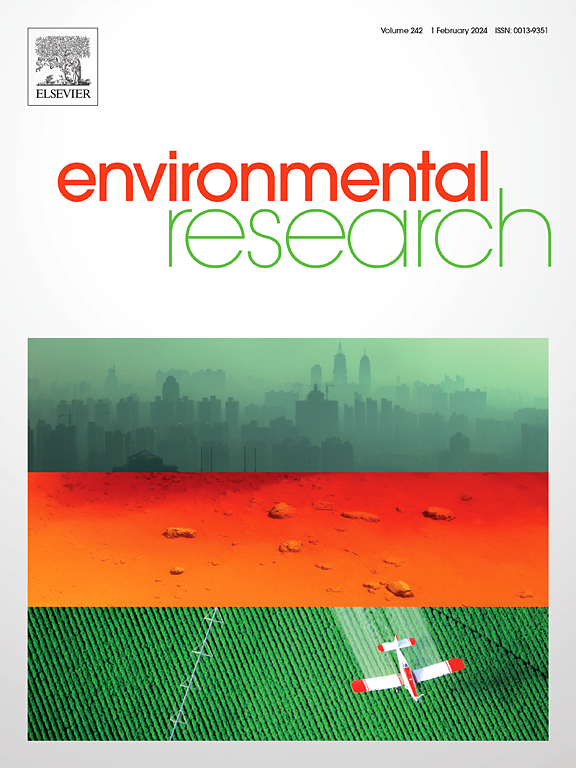用多光谱技术表征生物炭衍生的溶解有机物与两种典型重金属的络合作用
IF 7.7
2区 环境科学与生态学
Q1 ENVIRONMENTAL SCIENCES
引用次数: 0
摘要
生物炭衍生的溶解有机物(BDOM)通过直接影响水体中重金属(HMs)的形态和环境行为,在重金属(HMs)的迁移转化中起着重要作用。本研究利用多光谱技术系统研究了生物炭衍生的溶解有机物(BDOM)与重金属(Pb(II)/Cd(II))的结合特性及机制。采用UV-Vis、EEM-PARAFAC、SFS、FTIR和2D-COS等方法对四种生物炭(猪粪、牛粪、玉米秸秆和污水污泥)中提取的BDOM进行了表征。结果表明,BDOM主要由3种腐殖质样成分和1种蛋白质样成分组成,其中污泥BDOM的荧光强度最高。金属滴定实验表明,Pb(II) (logKM = 3.89-5.15)比Cd(II)更强的荧光猝灭,尽管Ryan-Weber模型只成功拟合了Pb(II)的结合参数。2D-COS分析发现多糖是主要的结合位点,其次是脂肪族化合物。值得注意的是,尽管它们的丰度很低,但蛋白质样成分和非荧光多糖在HMs结合中发挥了重要作用。这些发现为BDOM和HMs之间依赖源的相互作用提供了分子水平的见解,为预测HMs在生物炭修饰环境中的迁移和转化提供了理论基础。本文章由计算机程序翻译,如有差异,请以英文原文为准。

Characterization of complexation between biochar-derived dissolved organic matter and two typical heavy metals by a multi-spectral technique
Biochar-derived dissolved organic matter (BDOM) is important in the migration and transformation of heavy metals (HMs) within aqueous environments by directly influencing their morphologies and environmental behavior. This study systematically investigated the binding characteristics and mechanisms between biochar-derived dissolved organic matter (BDOM) and heavy metals (Pb(II)/Cd(II)) using multi-spectroscopic techniques. BDOM extracted from four biochar types (pig manure, cow manure, corn stalk, and sewage sludge) was characterized by UV–Vis, EEM-PARAFAC, SFS, FTIR, and 2D-COS analyses. Results revealed that BDOM primarily consisted of three humic-like components and one protein-like component, with sewage sludge BDOM exhibiting the highest fluorescence intensity. Metal titration experiments demonstrated stronger fluorescence quenching for Pb(II) (logKM = 3.89–5.15) than Cd(II), though the Ryan-Weber model only successfully fitted Pb(II) binding parameters. 2D-COS analysis identified polysaccharides as the primary binding sites, followed by aliphatic compounds. Notably, despite their low abundance, protein-like components and non-fluorescent polysaccharides played significant roles in HMs binding. These findings provide molecular-level insights into the source-dependent interactions between BDOM and HMs, offering a theoretical basis for predicting HMs mobility and transformation in biochar-amended environments.
求助全文
通过发布文献求助,成功后即可免费获取论文全文。
去求助
来源期刊

Environmental Research
环境科学-公共卫生、环境卫生与职业卫生
CiteScore
12.60
自引率
8.40%
发文量
2480
审稿时长
4.7 months
期刊介绍:
The Environmental Research journal presents a broad range of interdisciplinary research, focused on addressing worldwide environmental concerns and featuring innovative findings. Our publication strives to explore relevant anthropogenic issues across various environmental sectors, showcasing practical applications in real-life settings.
 求助内容:
求助内容: 应助结果提醒方式:
应助结果提醒方式:


